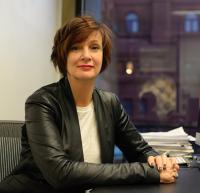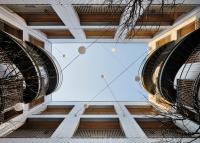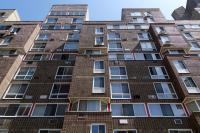National Holocaust Monument
Ottawa, Canada
Studio Libeskind in collaboration with Lord Cultural Resources, photographer Edward Burtynsky, landscape architect Claude Cormier, and Holocaust scholar Doris Bergen, inaugurate the National Holocaust Monument in Ottawa on Wednesday, September 27, 2017.
The National Holocaust Monument, established through the National Holocaust Monument Act by the Government of Canada, will ensure a permanent, national symbol that will honor and commemorate the victims of the Holocaust and recognize Canadian survivors. Through an international design competition, Lord Cultural Resources and its multidisciplinary and multicultural team, was selected to create the Monument for the Government of Canada.
The Monument will honor the millions of innocent men, women and children who were murdered under the Nazi regime and recognize those survivors who were able to eventually make Canada their home. The Monument is an experience that combines architecture, art, landscape and scholarship in ways that create an-ever changing engagement with one of the darkest chapters of human history while conveying a powerful message of humanity’s enduring strength and survival.
Centrally located at the corner of Booth and Wellington Streets across from the Canadian War Museum, the .79 acre site connects the museum to the historic center of the capitol city. The cast-in-place, exposed concrete Monument is conceived as an experiential environment comprised of six triangular, concrete volumes configured to create the points of a star. The star remains the visual symbol of the Holocaust – a symbol that millions of Jews were forced to wear by the Nazi’s to identify them as Jews, exclude them from humanity and mark them for extermination. The triangular spaces are representative of the badges the Nazi’s and their collaborators used to label homosexuals, Roma-Sinti, Jehovah’s Witnesses and political and religious prisoners for murder.
The Monument is organized with two physical ground planes that are differentiated by meaning: the ascending plane that points to the future; and the descending plane that leads visitors to the interiors spaces that are dedicated to contemplation and memory. Six triangular concrete forms provide specific program areas within the Monument: the interpretation space that features the Canadian history of the Holocaust; three individual contemplation spaces; a large central gathering and orientation space; and the towering Sky Void that features the eternal Flame of Remembrance, a 14 meter-high form that encloses the visitor in a cathedral-like space and frames the sky from above.
Edward Burtynsky’s large scale, monochromatic photographic landscapes of current day Holocaust sites – death camps, killing fields and forests – are painted with exacting detail on the concrete walls of each of the triangular spaces. These evocative murals aim to transport the visitor and create another dimensionality to the interiors spaces of canted walls and labyrinth-like corridors.
The Stair of Hope rises from the central gathering space, cuts through a dramatically inclined wall and points at the upper plaza towards the Parliament Buildings; a gesture that recognizes and acknowledges the Canadian survivors who have contributed much to Canada and who continued to play an important role in exposing the dangers of state sponsored genocide.
Surrounding the monument, a rough landscape of various coniferous trees will emerge from the rocky pebbled ground. This landscape will evolve over time representative of how Canadian survivors and their children have contributed to Canada.
Lighting design by New York-based Focus Lighting creates a dramatic yet serene atmosphere for visitors. By night the large-scale murals become the center piece of the massive angled walls and the central Stair of Hope is a glowing beacon leading up to the street and framed by the Parliament Building. The lighting design threads together the architectural language with an intimate and comfortable environment. Strategic use of indirect sources allows light to emanate from architectural features without distracting from the viewer’s experience.
- Architects
- Studio Libeskind
- Location
- Ottawa, Canada
- Year
- 2017
- Landscape Architect
- Claude Cormier
- Structural Engineer
- RJC Read Jones Christofferson
- Engineering (Mechanical, Electrical, Civil)
- WSP
- Lead Cultural Consultant
- Lord Cultural Resources
- Lighting Designer
- Focus Lighting
- Contractor
- UCC Group
- Photography
- Edward Burtynsky


















